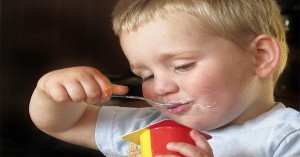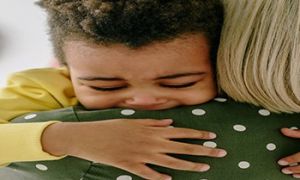Iron is needed to make red blood cells, which carry oxygen around the body. It also plays an important role in fighting infections, brain development and growth. Children who do not eat enough iron containing foods may become tired, faint, pale, uninterested in play and may complain of headaches and often have low appetites. If you do not eat enough iron from food the level of iron stores in the body will fall and anaemia may result. It is best to eat a diet supplying enough iron in order to stay healthy. To improve blood iron levels it is recommended that everyday you eat a variety of foods that contain iron.
What are the best sources of iron?
There are two types of iron found in foods. Haem iron is found in flesh foods such as red meat, chicken and fish, and non-haem iron is found in plant foods such as wholegrain breads and cereals and some vegetables.
The iron in meat, chicken and fish (haem iron) is better absorbed than the non-haem iron. However, the absorption of non-haem iron is increased greatly when a food containing vitamin C is eaten at the same meal. Foods rich in haem iron can help to absorb iron from non-haem sources too.
Foods which contain haem iron include:
- Lean red meats such as beef, lamb and veal.
- Offal meats such as liver and kidney.
- Chicken, pork (including ham), fish and shellfish.
- Pate or fish paste.
Foods which contain non-haem iron include:
- Iron-fortified breakfast cereals (check the label to see if iron is added).
- Wholemeal/wholegrain breads and cereals.
- Dried peas, beans and legumes eg. lentils, baked beans, soybeans, kidney beans and tofu.
- Leafy green vegetables eg. spinach, parsley, broccoli.
- Eggs.
- Dried fruit.
- Peanut butter and nuts (whole nuts are not recommended for children under five).
- Milo® or Ovaltine® for older children.
- Tahini and hommus.
Vitamin C helps the body to absorb more iron. Foods that are high in vitamin C include some fruits (rockmelon, strawberries, pineapple, citrus fruits, kiwi fruit and tomato) and some vegetables (broccoli, capsicum, cauliflower, and brussel sprouts).
Include a serve of vitamin C rich fruit and vegetables with meals to help the body absorb more iron. Here are some ideas to try:
- Fruit on breakfast cereal.
- Vegetables or a salad with meals.
- Fruit for dessert.
- A small glass of juice with meals.
Children birth to six months
Up to six months of age most babies will get all the iron they need from body stores at birth and breast milk, or iron-fortified formula. However after six months their iron stores may be running down. Introduction of solids is an important step in maintaining a satisfactory iron level. Introduce solids at an appropriate age, usually around six months. Include some iron rich foods such as iron-fortified rice cereal.
Children six to 12 months
Offer foods before a breast or bottle feed. Encourage foods that contain iron. First foods should be a smooth consistency. Gradually increase the texture of foods over the next few months eg. Iron fortified cereals, puree fruits and vegetables.
By six to nine months of age, babies start to learn to chew. The texture of foods can therefore change quickly from smooth to mashed with soft lumps. Learning to chew with their gums or teeth is very important as it strengthens jaw muscles, promotes healthy teeth, assists with speech development and ensures a smooth progression to family foods eg minced meat, flaked fish (be careful of bones), mashed vegetables and fruits and iron fortified cereals.
Foods such as meat, chicken and fish are important for your baby as they are high in iron. As they require chewing, they assist in the development of feeding skills as well. Start introducing meat at seven to eight months of age. Remember that gums are just as good as teeth for chewing!
Aim for baby to eat chopped foods by nine to twelve months. For example, soft cooked meat and chicken pieces can be offered at dinnertime with a variety of vegetables.
For infants over nine months try to introduce drinking from a cup instead of a bottle. Introduce cow's milk as your child's main milk drink around twelve months of age. Milk is a poor source of iron. Up to 400-600mls of milk each day is an appropriate quantity to offer. This allows your child to get hungry so he/she will be more willing to eat solid foods.
Include iron rich foods in the diet every day.
Dietary guidelines for children and adolescents
- Encourage and support breastfeeding.
- Children need appropriate food and physical activity to grow and develop normally (growth should be checked regularly).
- Low fat diets are not suitable for young children under 5 years. It is appropriate for children over the age of 5 to have a diet low in fat, particularly low in saturated fat.
Encourage your child to:
- Enjoy a wide variety of foods.
- Eat plenty of breads, cereals, vegetables (including legumes - beans and peas) and fruit.
- Eat foods containing iron.
- Eat foods containing calcium eg milk, yogurt, cheese.
- Drink water when thirsty (alcohol is not recommended for children).
- Eat only a moderate amount of sugars and foods containing added sugars.
- Choose low salt foods.
The Australian Guide to Healthy Eating
Eat small amounts of salt, sugar, butter, margarine, oil, cream and foods containing high amounts of these ingredients.
Remember:
The little fat that you have should be:
- Polyunsaturated or monounsaturated margarine.
- Polyunsaturated or monounsaturated oil eg. olive or canola oil.
Eat moderately milk, cheese, yoghurt, lean meat, poultry, fish, eggs, nuts (whole nuts not recommended for children under 5).
Remember:
- Eat lean meats every day, as they are high in iron.
- Full fat dairy products are recommended for children under two years of age.
- Children older than 2 years can use reduced fat or low fat diary products.
Eat most breads, iron fortified breakfast cereals, legumes, leafy green vegetables, vegetables and fruits.
Remember:
- Choose wholemeal or whole grain where possible.
- Include different coloured vegetables each day.
Iron is needed to make red blood cells, which carry oxygen around the body. Children who do not eat enough iron will become tired, faint, pale, uninterested in play and may complain of headaches. To improve blood iron levels it is recommended that you eat a variety of foods, which contain iron everyday. Vitamin C helps iron to be absorbed by the body, so try to include a serve of vitamin C rich food such as fruits and vegetables with meals.
References
Aussie Childcare Network acknowledges the co-operation of The Children’s Hospital at Westmead, Sydney Children’s Hospital and Kaleidoscope, Hunter Children’s Health Network in making this fact sheet available.
Disclaimer: This article is for education purposes only. Please consult with your doctor or other health professional to make sure this information is right for your child.










